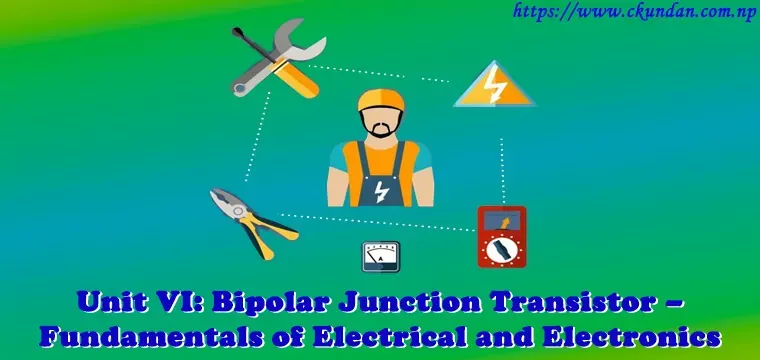A Bipolar Junction Transistor (also known as a BJT or BJT Transistor) is a three-terminal semiconductor device that may amplify or magnify a signal by using two p-n junctions. It is a gadget that is controlled by current. The base, collector, and emitter are the three terminals of the BJT. A BJT is a kind of transistor in which the charge carriers are both electrons and holes.
When a tiny signal is applied to the transistor's base, it is amplified and accessible at the collector. The BJT provides amplification in this case. The amplification method does, however, need the use of an external DC power supply.
In this “Bipolar Junction Transistor – Fundamentals of Electrical and Electronics” you will learn about the following topics:
- Transistor Types:
- PNP And NPN Transistors
- Principle of Operation and Parameter
- Their Relationships.
- Transistor Configurations:
- Common Base
- Common Emitter
- Common Collector
- Amplification
- Input and Output Impedance
- Biasing
- DC and AC Load Lines
- Operating Point
- Application of BJT
- Resistor Transistor Logic Gates: AND, OR
This article Bipolar Junction Transistor – Fundamentals of Electrical and Electronics is contributed by Ritesh Thapa, a student of LA GRANDEE International College (LGIC).
==== Point to Note ====
This article Bipolar Junction Transistor – Fundamentals of Electrical and Electronics is contributed by Kabita Adhikari, a student of LA GRANDEE International College (LGIC).
If you like to contribute, you can mail us BCA Notes, BCA Question Collections, BCA Related Information, and Latest Technology Information at [email protected].
See your article appearing on BCA Notes (Pokhara University) main page with your designation and help other BCA Students to excel.
Please write comments if you find anything incorrect, or you want to share more information about the topic discussed above.
BCA 2nd Semester Fundamentals of Electrical and Electronics Notes Pdf:
- Unit I: Electric Circuit Elements
- Unit II: DC Circuits
- Unit III: Single Phase AC Circuit
- Unit IV: Semiconductor Materials
- Unit V: The PN Junction Diode
- Unit VII: Junction Field Effect Transistor (JFET)
- Unit VIII: Metal Oxide Semiconductor Field Effect Transistor (MOSFET)
- Unit IX: The Operational Amplifier








0 Comments